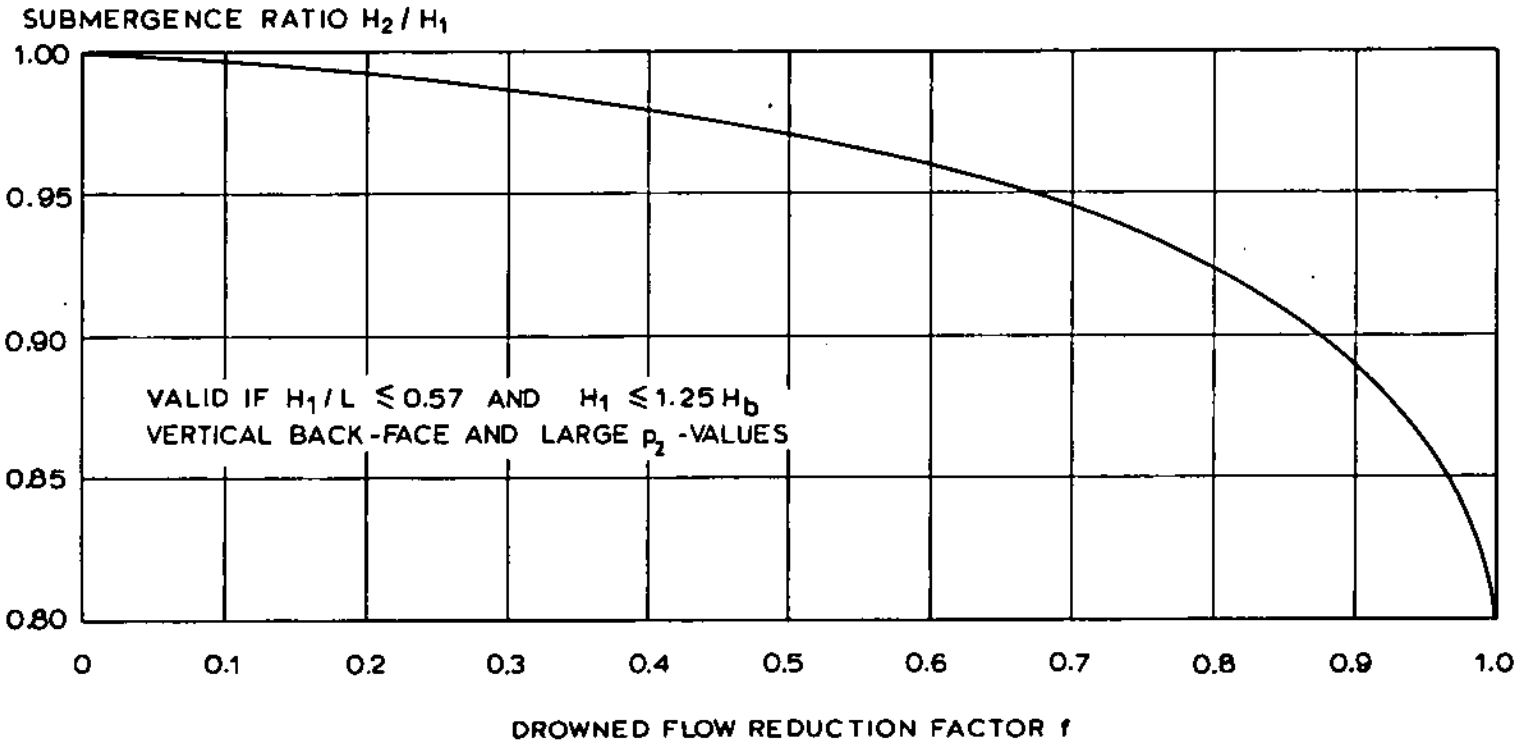V-notch weir formula

Perspective view of a triangular weir (from CETMEF, 20051)
Free flow formula
Avec:
- \(C_d\) : discharge coefficient
- \(\alpha / 2\) : half-angle at the apex of the triangle
- \(Z_1\) : upstream water elevation
- \(Z_d\) : spill elevation at the tip of the triangle
The discharge coefficient \(C_d\) depends, among other things, on the thickness of the weir:
- Sharp-crested weir : \(C_d\) = 1.37
- Broad-crested weir (rounded off \(r > 0.1 * h1\)) : \(C_d\) = 1.27
- triangular profile weir : (1/2 upstream, 1/2 or 1/5 downstream) : \(C_d\) = 1.68 and 1.56
Submergence of a V-notch sharp-crested weir
The weir is submerged as soon as \(Z_{2} > Z_{d}\) and the Villemonte reduction coefficient is then applied to the discharge calculated in free flow.
Submergence of a V-notch broad-crested weir
Submergence occurs for \(h_2 / h_1 > 4 / 5\) with \(h_1 = Z_1 - Z_d\) and \(h_2 = Z_2 - Z_d\), and with \(Z_2\) the downstream water elevation.
The reduction coefficient proposed by Bos (1989) 2 is then applied:

Submergence reduction factor for a V-notch broad-crested weir (from Bos, 1989 2)
The abacus is approximated by the following formula:
-
CETMEF, 2005. Notice sur les déversoirs : synthèse des lois d’écoulement au droit des seuils et déversoirs. Centre d’Études Techniques Maritimes Et Fluviales, Compiègne. ↩
-
Bos, M.G., 1989. Discharge measurement structures., 3rd edition. ed, Publication. International Institute for Land Reclamation and Improvement, Wageningen, The Netherlands. ↩↩↩